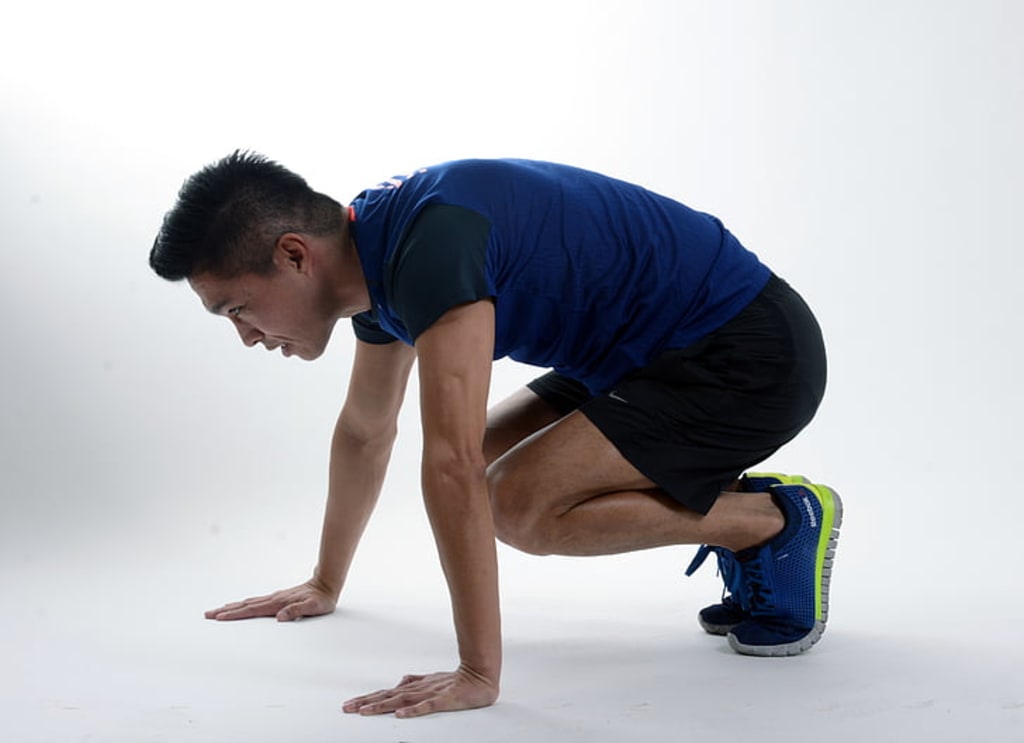
Plyometric exercises include, but are not limited to, jumping as high as you can or doing quick push-ups with a hand clap in between. Your goal is to build more muscle. According to Sports Fitness Adviser, plyometric intensity burns a lot of calories rapidly.
Jumping Intensity

With experience and a gain in fitness, you may intensify your plyometric exercise. Start with 30 seconds of each exercise, increasing the pace and explosiveness with each rep, and lengthen the program until your heart rate is at least 85% of your maximum anticipated rate. According to Sport Fitness Adviser, if your program lasts longer than 20 to 30 minutes, your physiology will be working aerobically and burning calories obtained from your body fat, not only from the sugar flowing in your blood when you began your exercise. Remember to take breaks in between sets.
Plyometric Types

According to exercise physiologists at the University of New Mexico 2, you may tailor your plyometrics to tone and grow your lower body or your upper body solely. But, all activity burns calories and fat from all over your body, not just the muscles you are focusing on. As a consequence, any kind of plyometric activity you do helps you burn calories in general. Basketball, track and field, soccer, football, hockey, and any other activity requiring sprinting, leaping, or kicking benefit from lower body plyometrics. In sports like basketball, volleyball, tennis, and throwing, upper body plyometrics are beneficial. A medicine ball is often used in upper body plyometrics. Regardless of the muscle area you are focusing on, you will burn off one pound of body fat from all over your body for every 3,500 calories you burn in excess of what you consume.
Calorific Burn

Larger individuals burn more calories than smaller ones during the same activity since your body mass is a factor in the weight you exercise with. For instance, running at 5 mph for an hour will burn 480 calories if you weigh 125 pounds. You will burn 710 calories at 185 pounds. Rope jumping burns 600 calories per hour and elliptical exercise burns 800 calories per hour, respectively. Carrying your bag and walking the greens in golf, which is a less plyometric activity, will only burn 330 and 488 calories, respectively, demonstrating the advantage of plyometric exercise in calorie burning.
Results
Plyometric exercise has advantages beyond weight loss and a reduction in body fat. Also, you'll build muscular mass, firmness, and strength, all of which contribute to a well-toned physique. Plyometric workouts increase endurance and cardiovascular fitness because of their intensity and explosive speed.
Can You Lose Weight Using Plyometrics?
Plyometric exercises do burn calories. Explosive movements are used in plyometrics, a kind of interval training, to increase power, speed, and agility. The body has to move fast and vigorously during plyometric activities, which makes it consume and burn more calories.
Plyometric exercises may help individuals quickly raise their resting metabolic rate, which increases the amount of calories burned both during and after a workout. Plyometric exercises may also initiate the afterburn effect, which causes the body to burn more calories for up to 24-48 hours after a workout.
Is HIIT Better Than Plyometrics?
The particular objectives of each person actually determine this. Plyometrics and HIIT (High-Intensity Interval Training) both provide health and fitness benefits, although they often accomplish different things.
Plyometrics is a style of workout that uses quick, explosive movements to boost power, strength, and agility. Plyometric exercises may be performed with or without extra weight to increase resistance, and often include repeatedly doing the same leaps or motions.
The emphasis of HIIT, on the other hand, is primarily on fat loss, cardiovascular fitness, and endurance. HIIT is a kind of interval training that alternates between high and low levels of exercise. Therefore one sort of exercise may be more advantageous than the other depending on your objectives.
Plyometrics could be the better choice for someone aiming to improve their strength and power, whilst HIIT would be more suited for someone looking to improve their cardiac endurance.






Comments
There are no comments for this story
Be the first to respond and start the conversation.